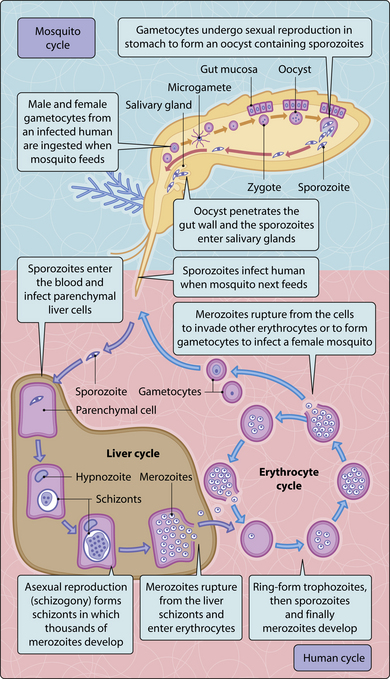33. Malaria
Life cycle
Malaria is spread by the bite of an infected female Anopheles mosquito. Occasional transmissions occur via blood transfusions and intrapartum via the placenta (mainly with P. vivax). The parasite has a complex life cycle involving sexual reproduction in the mosquito and asexual reproduction in liver parenchymal cells and erythrocytes (red blood cells) in humans (Fig. 3.33.1). In P. ovale and P. vivax infection, some sporozoites remain dormant as hypnozoites in the parenchymal cells, only starting the process of schizogony months or years later.
Epidemiology
In spite of intensive control measures, malaria remains widely distributed in the tropics and subtropics of Africa, Asia and Latin America (Fig. 3.33.2). P. falciparum and P. vivax account for 95% of all malaria cases, and 80% of these occur in tropical Africa:
 P. falciparum: malignant tertian malaria; the predominant species in the tropics, occurring in sub-Saharan Africa, Middle East, Southeast Asia and South America
P. falciparum: malignant tertian malaria; the predominant species in the tropics, occurring in sub-Saharan Africa, Middle East, Southeast Asia and South America P. vivax: benign tertian malaria; common in the tropics, subtropics and some temperate regions, except in West Africa
P. vivax: benign tertian malaria; common in the tropics, subtropics and some temperate regions, except in West AfricaStay updated, free articles. Join our Telegram channel

Full access? Get Clinical Tree









